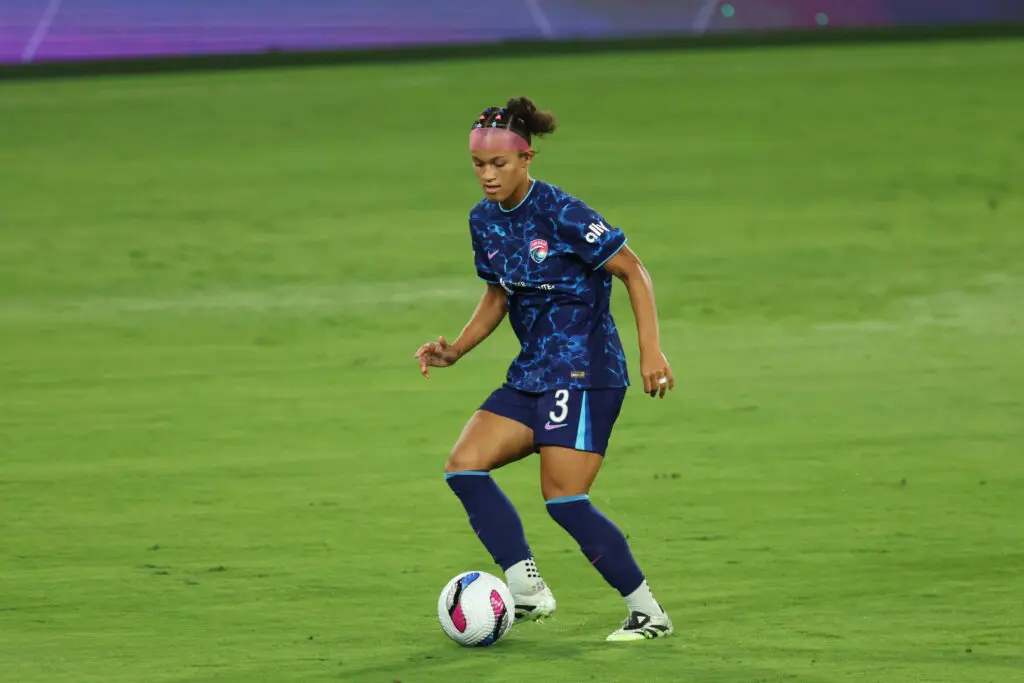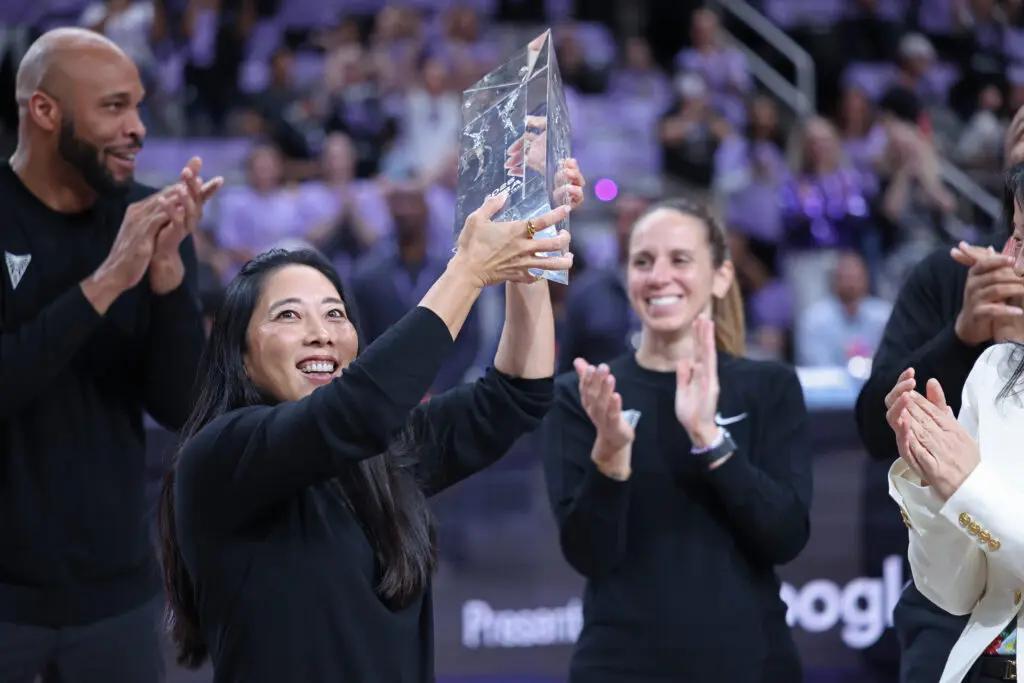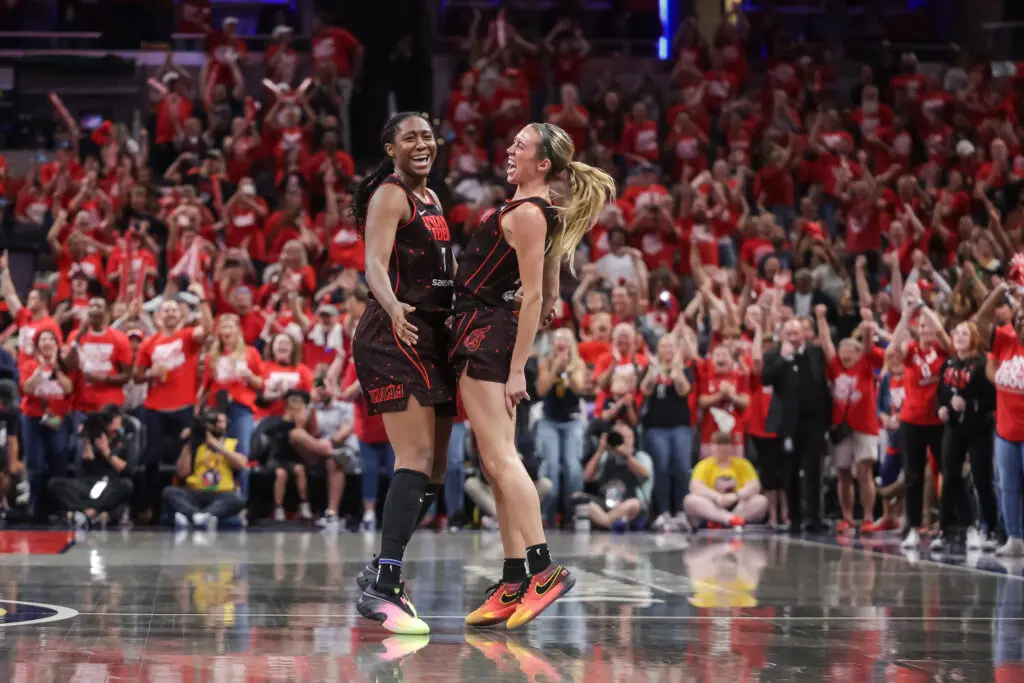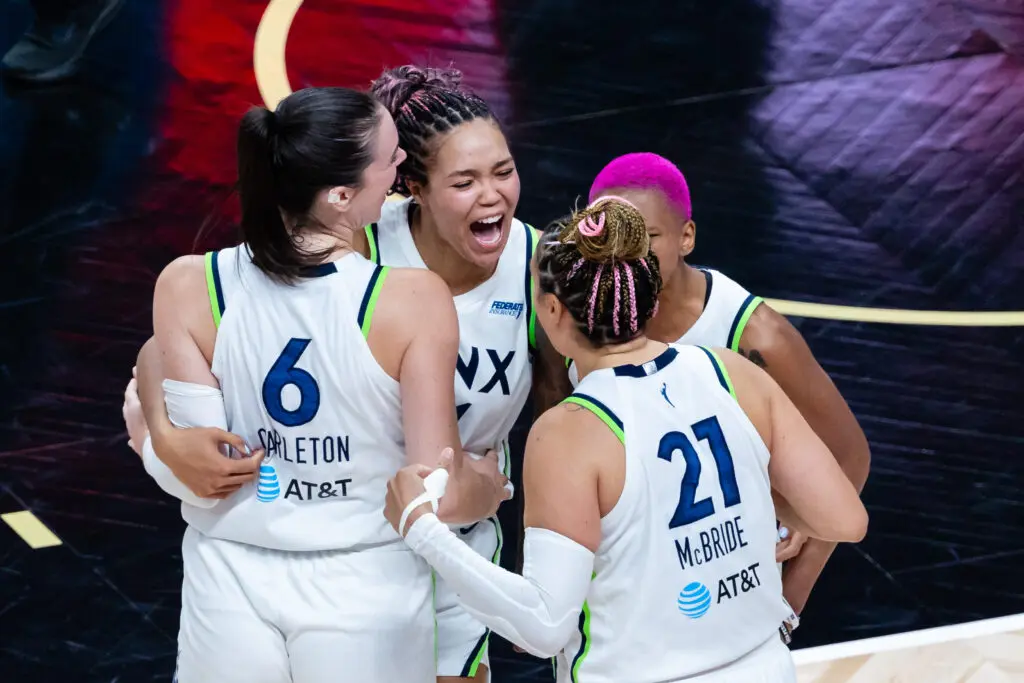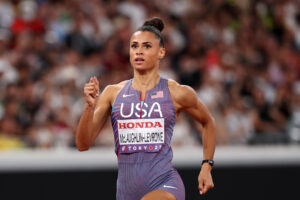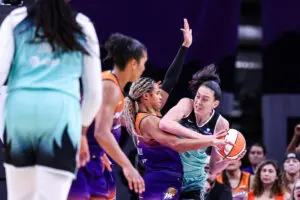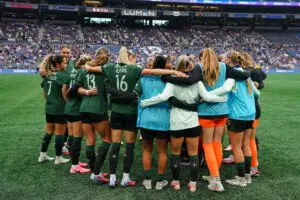DUBAI — Salma, a 15-year-old soccer player for the Alliance Girls Football Club Dubai, was early to training. The turf at Sunmarke School, Jumeirah Village Triangle in Dubai felt as if it were 100 degrees, even at 5 p.m. in November. Salma’s boots were laced up, her shin guards strapped on and her hair slicked back. In one natural movement, she rolled the ball onto her right foot and began juggling.
Salma has only been playing organized soccer for a few years, even though she spent her childhood kicking the ball around in her family’s backyard in Dubai and at school during recess. Having grown up in a country that has historically excluded girls and women from sports, Salma currently plays for Alliance Girls Football Club Dubai’s seven-a-side team and the boys’ 11-a-side team.
“The girls would be just sitting around doing nothing [during school recess], and I’d see the boys playing football and I’d join in,” Salma says. “Some of them were nice, but they weren’t going to choose me for the team, so I’d have to wait and just jump in.”

In order to succeed at a sport dominated by men in her country, Salma has had to take risks. At 15 years old, she’s already been exposed to the top players in the United Arab Emirates (UAE). In Dubai, there aren’t enough prospective women’s players to form a competitive club team for her age group, so she has to play with boys and girls sometimes more than 10 years older than she is to keep improving.
“It’s a bit nerve-racking playing with the boys or older women because you have to live up to an expectation,” Salma says. “When I get the ball, I tell myself, ‘Don’t stress out. Just know what you’re going to do before you get the ball.’”
Even though Dubai is the most populous city in the UAE, known for its tourism, commercial and financial centers and home to the tallest building in the world, Burj Khalifa, the girls and women’s soccer scene remains small. It took the UAE hosting the FIFA Women’s Club World Cup in Abu Dhabi in 2009, when Barcelona won its first title in club history, for women’s soccer to enter the national conversation in earnest.
During the tournament, it was hard to be in the UAE and miss a game; televisions everywhere aired the matches, people talked about goals and results in the streets, and large groups gathered to watch the best women’s club teams in the world go head-to-head. Shortly after that, the UAE formed a women’s national team, and in 2010 the team competed in its first international competition, the West Asian Championship.
Salma’s fearlessness to compete resembles that of Areej Alhammadi, her role model and favorite player on the UAE women’s national team. Alhammadi joined the team in 2015 after being scouted in a seven-a-side tournament. She also holds the Guinness World Record for completing 86 “hotstepper” football tricks in one minute in August 2020.
We are delighted to announce Areej Al Hammadi as the record holder for 'most football 'hotstepper' ball control tricks in one minute'! ️️⚽️
— Guinness World Records (@GWR) July 29, 2020
The announcement was made on the launch of #GWRDay - a day to celebrate record-breaking across the globe.https://t.co/YYuGIbElDP pic.twitter.com/RXLg3ITOZR
“Growing up as a kid in the early ‘90s, there was no such thing as women’s football in the UAE,” Alhammadi says. “To some extent, it was considered somewhat of a taboo for adult Emirati women to participate in it. Nevertheless, I grew up playing with my brothers and cousins until I was too old to play with boys.”
Alhammadi practiced her ball skills alone most of the time because there weren’t any soccer academies or clubs for women. At one point, she tried to form a team at school, but none of the other young women were interested in joining her, a familiar experience for Salma over 10 years later. Eventually, Alhammadi joined a seven-a-side football team that was growing in popularity.
In the United States and other countries, seven-a-side is for players under 9 years old. As they get older, they move up to play nine-a-side and, eventually, the typical 11-a-side. In the UAE, “football 7s” is common among all age groups and, up until now, the only format women’s clubs and academies have used. The goal among the women’s soccer community in the UAE is to create 11-a-side opportunities for future generations.
Girls Football Dubai Director Shauna Duffy came to Dubai a few months ago from the United Kingdom to spearhead that movement. She knew seven-a-side, but only from her early days coaching 16-year-olds. The UAE’s tendency to play a 3-2-1 formation in seven-a-side was just one of several differences Duffy had to get used to after spending the last six years as a coach in Liverpool’s Football Academy.

Duffy was setting up her evening session on the 85-degree day in November when she explained what led her here. Duffy has her UEFA B License and is currently completing her UEFA A License. When soccer stopped altogether in the UK in 2020 because of COVID-19, she jumped at the opportunity to get back out on the pitch, even if it meant moving to a brand-new country.
“It was a two-week window of being offered the job to being out there,” says Duffy, who was hired to run the Girls Football Dubai Academy, Salma’s club and a part of Alliance Football Club Dubai. “In the UK, we weren’t even coaching, so it was a no-brainer.”
Duffy, in her short time with the club, has created a technical program for all of the players, started a ladies team that competes in the top seven-a-side league and helped build out the junior girls teams, senior girls teams and other select groups that distinguish the top-performing players every week for league play.
“Over here, there isn’t a professional league, so on the women’s team you will have 14-, 15-, 16-, 24- and 27-year-olds,” Duffy says. “You wouldn’t get that anywhere else, but over here to field a team and compete in the league, the age doesn’t matter. If you’re good enough, you’ll play.”
The leagues don’t have any regulations stopping 14-year old girls from competing with and against women twice their age.
“We have two girls at the moment that train with the boys as well,” Duffy says, referring to Salma as one of the two. “Because they are at the top end of the girls’ group, we need to keep pushing them and showing them something new. We’ve exposed them to 11-a-side with the boys team. For them, it’s ‘wow,’ because they’ve only ever known seven-a-side, so to even step onto a full size pitch, it’s confusing.”
Salma remembers a tackle she made when she was playing with the boys’ team against the UAE women’s national team. Near the end of the game, she stuck in against an opposing player while playing outside back, and to this day, she can still feel the satisfaction of winning that ball.
“She was the only girl to be selected [in that game],” Duffy says.
The football pathway for young women in the UAE is still developing. Every day, Duffy crafts new playing opportunities for her players and familiarizes them with 11-a-side. She does this by exposing players like Salma to the boys’ training sessions and building strategic practices that evolve into game-like scenarios.
“It’d just be great to see more girls teams,” Salma says.
Fortunately for Salma and Duffy, they are not the only ones pursuing that mission. Last August, French-Portuguese UEFA-certified coach Justine Lafon launched G.O.A.L Academy, Dubai, the first football academy for girls led by an all-women staff.

“There is so much that has to be done in women’s football that I decided to step up and open my own football academy for girls with 100 percent female coaches,” Lafon says. “Dubai seemed like the perfect place to do so, as it is a forward-thinking emirate and a land of opportunities where impossible is nothing.”
The UAE Football Association plans to develop women’s football in the country with a strategy called Vision 2038, designed to launch a FIFA-registered women’s 11-a-side league this season.
“Grassroots women’s football is at the heart of the project,” Lafon says. “I feel very fortunate that it happened the very first year I am in the region, and we already registered our team. We are very much looking forward to being part of the league and taking women’s football to the next level.”
Now that the women’s game is taking tangible steps toward growth in the country, Salma can finally start to realize her dreams of playing professional soccer. Alhammadi, who remembers when women’s soccer in the UAE was still a far-fetched prospect, has a more measured view of the situation. She, too, can feel the progress being made, but she hopes it’s just the beginning of the revolution.
“Culturally, we have also come a long way in terms of accepting Emirati women as athletes,” Alhammadi says. “But there’s a lot to be done for women’s football in the UAE to reach the potential it deserves.”
Celia Balf is a contributing writer at Just Women’s Sports. Follow her on Twitter @CeliaBalf.

